A novelist has recorded the following story: A man went to apply for a passport. The official asked where he wanted to go. He said it didn’t matter. The official gave him a globe of the world and asked him to make his choice. The man studied it, turned it around slowly, and finally said: Don’t you have another one?
— Xi Xi, ‘The Floating City‘
***
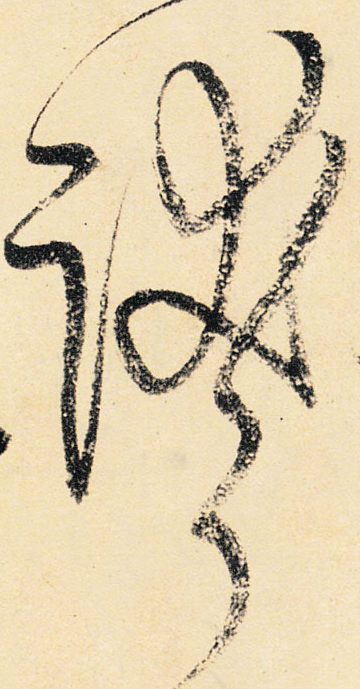
‘Strange Tales from a Floating City’ 浮城誌異 is by the celebrated Hong Kong novelist Xi Xi 西西 (the pen name of Cheung Yin 張彥). Written in 1986, it is a fable about a city untethered, and its inhabitants. It was translated by Linda Jaivin with Geremie Barmé for the chapter ‘Floating’ in New Ghosts, Old Dreams: Chinese Rebel Voices, New York: Random House, 1992, pp.416-424.
***
This is the fourth instalment in our series on Hong Kong, a British Crown Territory transformed over the past twenty years as a Special Adminitative Region of the Chinese People’s Republic. See also:
Xi Xi’s work has previously featured in China Heritage (see the poem ‘The First Light of Dawn’ in The Gate of Darkness), and chapters from her The Teddy Bear Chronicles, translated by Christina Sanderson, appear under Projects as well as in a number of our New Sinology Jottings.
— Geremie R. Barmé, Editor, China Heritage
12 July 2017
The Floating City
Xi Xi
Translated by Linda Jaivin with Geremie Barmé
1. Floating City
The floating city appeared suddenly before everyone’s eye in the middle of sky like a hydrogen-filled balloon on a clear, bright day many years ago. Rolling clouds swirled by above; waves crashed on the swelling sea below. The floating city hovered, going neither up nor down as it maintained its position, buffered slightly by the breeze.
Only our grandparents’ grandparents witnessed how it all began. It had been an unbelievable and terrifying experience, one they recalled fearfully. There had been a violent collision of clouds lighting up the sky with flashes and roars of thunder. On the sea countless pirate vessels had run up the skull and crossbones and fired their cannon nonstop. Suddenly the floating city had dropped form the clouds and hung in midair.
Many years passed. Our grandparents’ grandparents passed away, and our grandparents followed them into a deep sleep. By and by the story they had told became a mysterious legend.
The grandchildren settled in the city and gradually adapted to living there. Even its legend faded. Finally, the majority of people came to believe that the floating city had always hung in the sky, neither rising nor sinking. Even when it was buffeted by the wind and shook ever so slightly, it was like swinging on a swing.
Many more years passed.

2. The Miracle
It takes courage to live without roots: That’s what it said on the jacket of a novel. To live in the floating city required not only courage, but willpower and faith. In another novel there is a nonexistent knight who is nothing more than an empty suit of armour. Emperor Charlemagne asks him, what keeps you going? Willpower and faith, he replies.
With their willpower and faith, the inhabitants of the floating city toiled to create a liveable home. Within a few dozen years their efforts made the city vibrant, prosperous, and wealthy.
Buildings stood packed together in rows on the ground; highways and overpasses writhed in the air. Trains like centipedes ran underground and out to the suburbs; kidney stones were destroyed with laser beams; tumours could be located with brain scanners; people could follow the course of Hayley’s Comet in the observatory; and the life of the sea lion was an open book in the ocean park. Children were provided with nine years of free education, and there were unemployment benefits for the jobless, pensions for the disabled and elderly. Many arts festivals were held each year, and books from all over the world were available in the stores. If you didn’t want to talk to anyone, there was absolute freedom to be silent.
People couldn’t quite believe it possible that houses in the city could float in midair, that one flower grown there could fill a whole room. They all said that the floating city was a miracle.
3. Showers
May to September was the windy season. The winds blew from all directions, and the floating city swayed in the sky. the residents of the floating city were use to the swaying, and they went about their business as usual, not even missing the races. They knew from experience that the floating city would never be blown upside-down or in circles during the windy season, nor would it be blown away to some other place.
But one peculiar thing did happen in the windy season: The people dreamed. They started dreaming in May; they dreamed the same dream; they dreamed they were floating in the air, neither rising nor falling. It was as though each of them was a floating city in miniature. None of them had wings, so they couldn’t fly, they could only float. They didn’t speak to one another. They floated in absolute, solemn silence. Every day the sky in the floating city was full of floating people, just like rain in April.
From May on, people dreamed about floating. Even people who slept during the day dreamed that they had turned into floating people standing silently in midair. These dreams went away only in September. After the windy season people started having their own dreams once more.

Why did everyone have the same dream? Why did they all dream they were floating in the sky? One school of psychologists came to the conclusion that this was the collective expression of a ‘Third Riverbank Neurosis’.
4. Apples
In the summer a poser appeared in the streets of the floating city. On it was a picture of an apple with a line of French above it. It said: ‘Ceci n’est pas une pomme’ — ‘This is not an apple’. The appearance of the poster was not unusual since a large art exhibition was going to be held. This year’s exhibition was being held in honour of the Belgian artist René Magritte. The apple was one of his paintings.
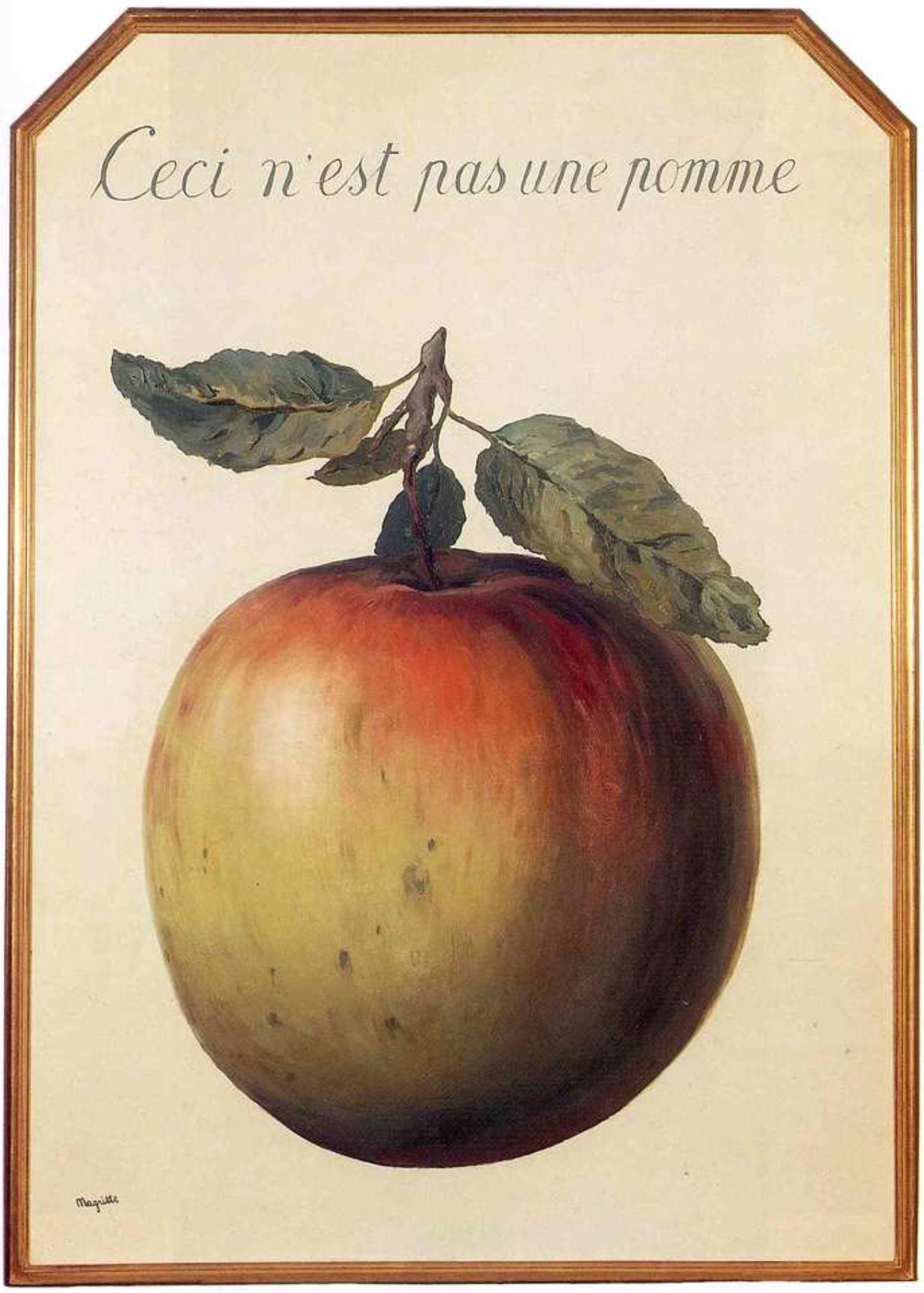
What did ‘This is not an apple’ mean? The picture was obviously of an apple. What the artist had meant was that the painting of an apple was not the same as an apple you can eat. You couldn’t touch it, smell it, or cut its flesh. It wasn’t a real apple; it was made up of lines, colour, and forms. The apple in the painting was an illusion. Didn’t the Greek philosopher Plato say that even the best, most realistic painting of a bed is still only a reproduction of a bed?
Posters of Magritte’s painting could be seen on every street corner, although only one or two out of every thousand people in the floating city would actually go to see the exhibition. The appearance of so many apples in the streets of the floating city was nonetheless a cause for excitement. Many people mistook it for an advertisement for the fruit market. Only a few intellectuals suddenly thought to themselves: The floating city is a stable place that neither rises nor sinks, yet it, too, is an illusion. The miracle of the floating city was not, after all, a fairy tale.
5. The Eye
‘Cinderella’ is a fairy tale. The pumpkin turns into a carriage; mice turn into horses; Cinderella’s rags turn into a ball gown. But at midnight everything turns back into what it was. Was the floating city just another Cinderella?
The people of the floating city didn’t have defective eyes. Modern science provided them with the most accurate microscopes and telescopes. They often looked down at the sea or upward at the sky and tested the direction of the wind. Why could the floating city continue to float steadily in the sky? Was it due to the gravitational pull between the sea and the sky? Or was Fate holding countless invisible strings and putting on a puppet show?
The apple in the picture was not a real apple; the city that existed so miraculously might not remain stable forever. But could the floating city control its own destiny? The instant the pull between the sea and the sky changed, or Fate tired of its game, wouldn’t the city sink, rise, or perhaps be blown off to some unknown place?
The people of the floating city opened their eyes wide and looked down. The angry waves of the sea surged beneath their feet. The city could be overwhelmed by the waters. Even if it managed to float on the water, wouldn’t there be a massacre when the pirates flying the skull and crossbones fell on them in droves? If the floating city rose upward, would the shifting, airy clouds provide a stable foundation for its solid weight?
6. A Problem
The floating city did not have any rivers, and the sea water was undrinkable. The city had to rely on the bounty of heaven for water. So although the people of the floating city liked brilliant sunny days, sometimes they had to pray for rain.
A teacher took a class of students to the exhibition hall of the Town Hall. They’d come for the art show. The students had pens and paper so they could record their impressions and copy down the names of the paintings. They asked: What does the picture of an umbrella with a glass full of water on it mean? And why is it called Hegel’s Holiday? They looked through the exhibition catalogue hoping to find an answer.
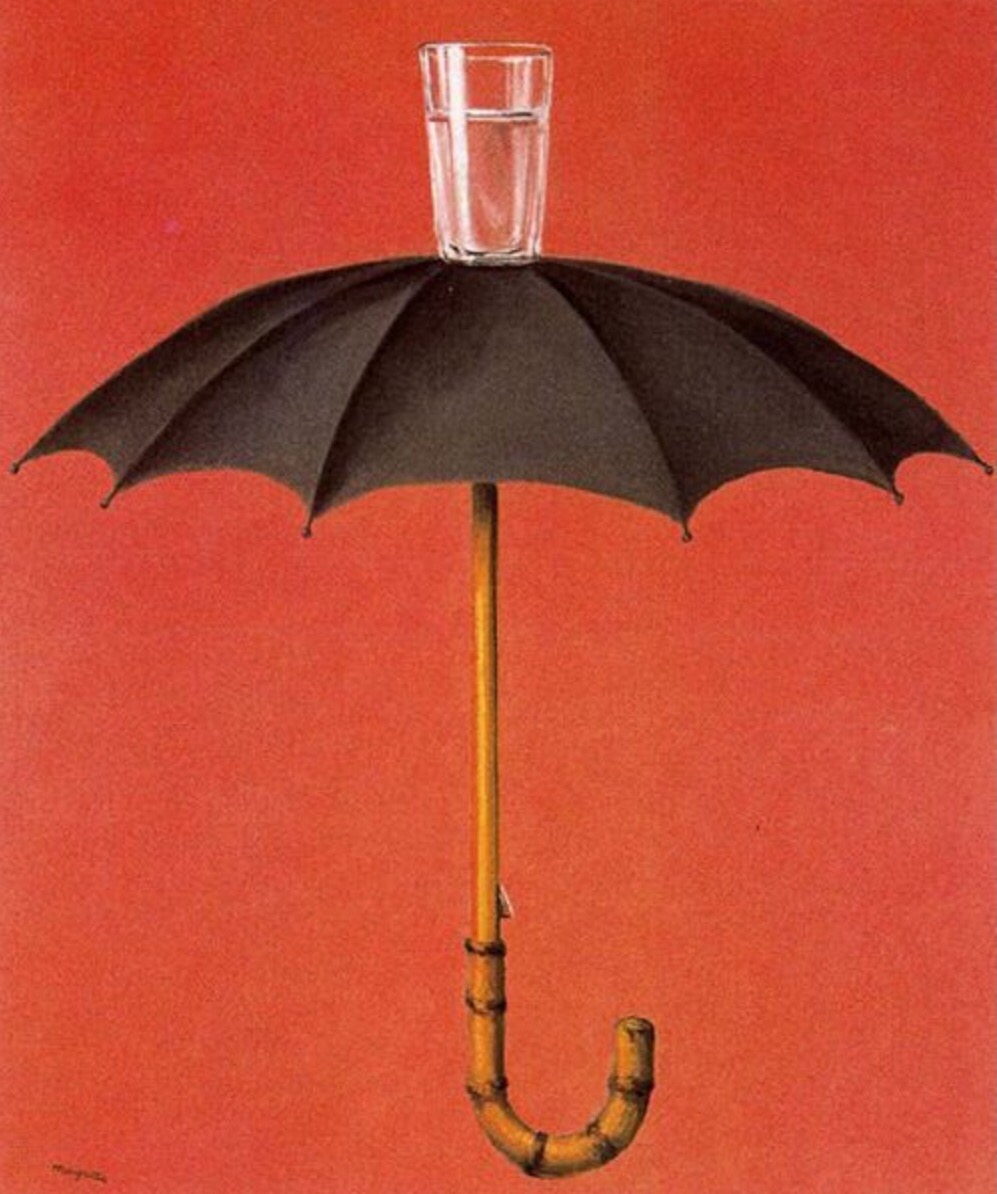
People treat water in different ways at different times. Somethings they are tolerant of it, sometimes they reject it. For example, people want to drink water when they are thirsty, they want it inside them. But on rainy days they use umbrellas to keep it out. Internal and external acceptance and rejection are things philosophers often think about. As for the problem of water, perhaps the philosopher Hegel might have been interested in giving it some thought. But it was a small problem, one he reserved for his holidays.
One student stood looking at the painting for a long time. He said: People use umbrellas to keep themselves dry. Since the water is all in the glass, there’s no need for an umbrella. There’s no need to reject anything. If there were a solid, reliable layer of clouds over the floating city, there would be hope for the city if it floated upward. Why reject it?
7. The Flower Spirit
The majority of the residents of the floating city were men who wore hats — the symbol of the petit bourgeoisie. They desire a stable, prosperous society, a warm, happy home. So they worked industriously every day; they were as busy as ants or bees. Hard work can help you forget lots of things. As a result of their labours, the people of the floating city were able to build a wealthy modern society in which everyone was well fed and well dressed. But it was a society in which material attractions were so great that people threw themselves into their labours with ever greater energy. They became victims of the bottomless pit of material desire.
One painting by the Italian Renaissance artist Botticelli is called Primavera; it shows a goddess scattering flowers over the earth and symbolises the return of spring. The messenger Hermes leads the way; cupid flies above Venus; the West Wind accompanies the Flower Spirit; and the Three Graces dance around as Primavera, dressed in fine coloured gauzes, scatters fragrant blossoms.
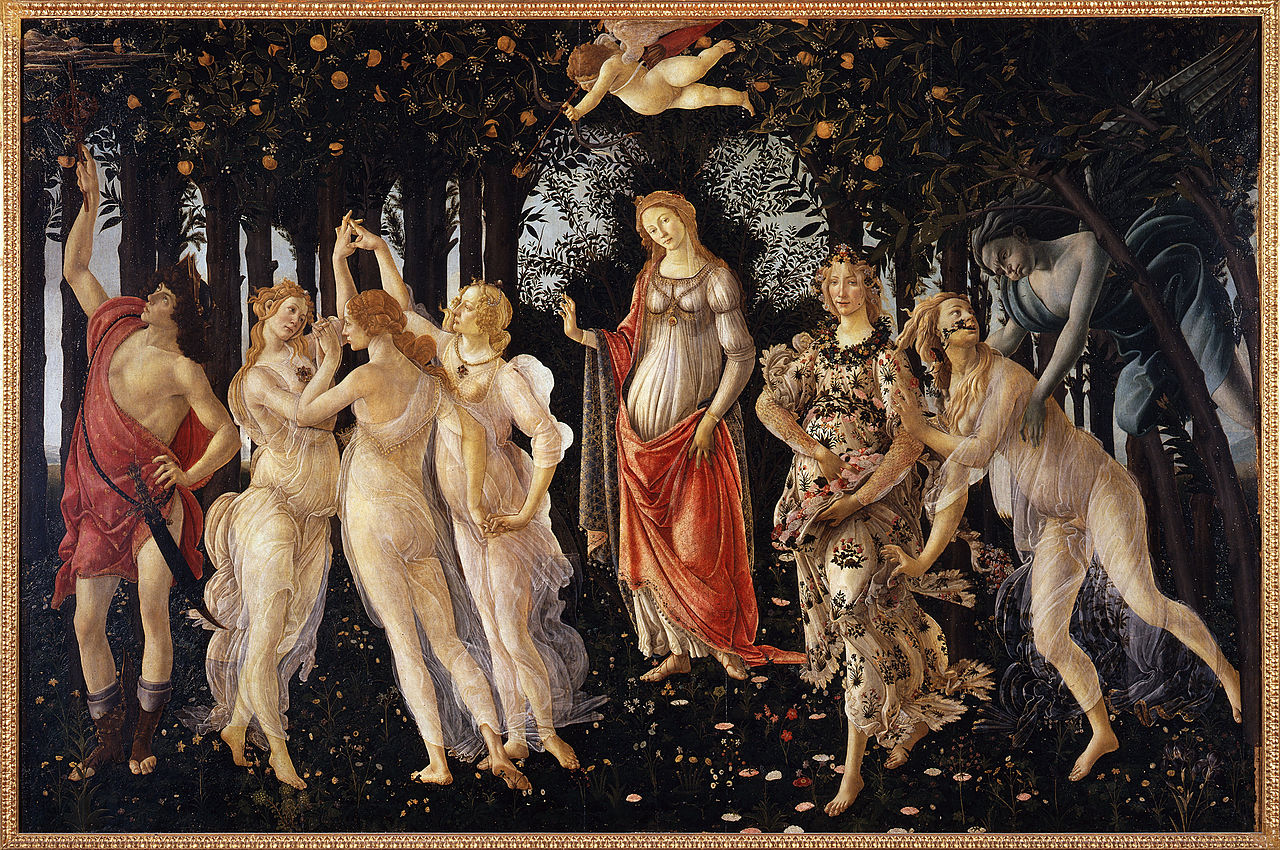
Li Gonglin of the Song dynasty painted a work entitled Vimalakīrti Preaching [維摩演教圖] that shows Mañjuśrī with some disciples visiting the sick Vimalakīrti at the Buddha’s command. Despite his illness, Vimalakīrti is preaching the dharma and enunciating the essence of the Great Vehicle to them. While he speaks, a heavenly spirit releases a shower of flowers. Mañjuśrī’s chief disciple is covered with the blossoms.
The citizens of the rich and populous floating city were so enamoured of material wealth that they wished the heavenly spirit would cast all of her flowers onto them; they even wished they could bundle Primavera up with her flowers in a sack and carry it around with them.
8. Time
It was an important moment, an absolute point in time. A train engine had just pulled in. A moment earlier the engine had not yet entered the fireplace; a moment later, it would have gone. It was only when the engine was steaming through the fireplace, only at this absolute point in time, that the smoke from it stack could go up the chimney. The chimney was the only suitable conduit for the smoke.
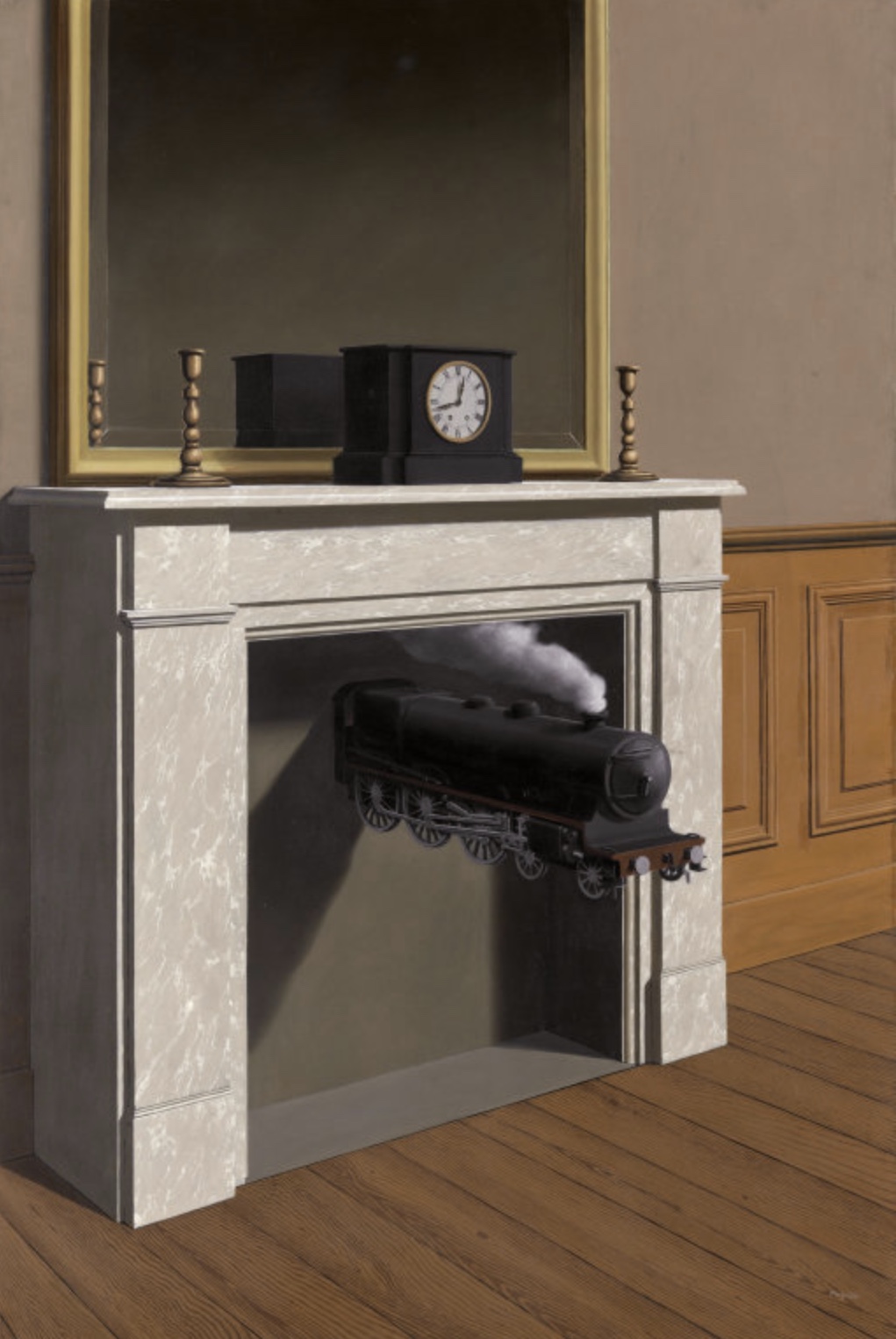
The fireplace reminded one of Christmas, a day the whole city celebrated. However, judging from the room this was not Christmas, because there were no stockings hanging in front of the fireplace, no pine tree in the room, no bright lights, no angels, no bells, no candles in the bronze candle holders.
On the marble clock on the mantelpiece the hour hand was approaching one, the minute hand was approaching nine. It was unclear where the second hand was. It was after midnight. A carriage would be a pumpkin again by now, horses would have turned back into mice, and the ball gown would be rags once more.
Yes, it was after midnight. But all the fables said the Cinderella would meet her prince on a white horse before midnight. Had the prince of the floating city been waiting close by as midnight approached? Although he was riding a magic white horse, since it had only one horsepower, perhaps he had arrived late.
Zero hour always made people anxious. What would it be like at one o’clock? Could people see the future through the mirror?
9. The Mirror
Only people who have been to the floating city will appreciate that the mirrors there are different. In ‘Snow White and the Seven Dwarves’ a magic mirror hangs in the wicked queen’s palace. It can answer questions and tell the queen who is the fairest of them all. It is an honest, sincere mirror: it never lies. The mirrors in the floating city are also honest mirrors. They reflect reality without fear or favour. Yet they have their limitations: The mirrors in the floating city can reflect only the backs of things.

All the mirrors, whether produced locally or imported, reflect only the reverse side of things. Whenever the people in the floating city look in a mirror, all they can see is the hair on the back of their heads. People have experimented by putting another mirror in front of the mirror on the wall, but no matter what they do, no matter how many mirrors are used and at whatever angles, they show only the backs of things. Women in the floating city always have to go to the beauty parlour to get made up because it is too difficult to do it themselves. If the men want a good shave, they have to go to a barber.
In the floating city’s mirrors you can’t find any answers or forecast the future. But you can know the past, and this isn’t necessarily a bad thing. History can teach lessons, and this is one of the good things about the mirrors in the floating city.
10. Wings
There are many means of transportation in the floating city: some ancient, like rope ladders and balloons, some modern, such as helicopters and parachutes. People who want to have a look in the clouds can climb the ladders or go up by balloon, while visitors to the sea can use parachutes or go by helicopter. However, over half of the people in the floating city want to grow wings themselves. All in all, these people find it scary to live in a city that floats in midair. The people who are really terrified agonise night and day, finally deciding to pack up their belongings and they behave like migratory birds, moving elsewhere to build an ideal new nest.
A novelist has recorded the following story: A man went to apply for a passport. The official asked where he wanted to go. He said it didn’t matter. The official gave him a globe of the world and asked him to make his choice. The man studied it, turned it around slowly, and finally said: Don’t you have another one?
It is a difficult decision to know where to go once you’ve left the floating city. Where can you find a city where you could live in peace forever? All those leaving the city have to have very strong wings, and they have to be very careful when in flight. If they go too near the sun, the wax that keeps the wings together melts and, like Icarus, they plummet to earth.
But the residents of the floating city are not really like migratory birds. Once they leave they do not return. Can they just go away, holding a walking stick and carrying their luggage, without ever looking back? Although the people in the floating city long to be like the pigeons that fly high in the sky, they are frustrated like birds imprisoned in a cage.
11. Bird Grass
In their longing to fly, the people of the floating city keep looking up at the sky. But they can’t take off, nor can they create a hoist to lift them into the sky. All they can do is dream when the windy season approaches, dream that they can float silently in the air. Even in their dreams they float but cannot fly.
After the windy season all of them dream their own dreams once more. They dream of bean-curd kites, snowflakes filling the sky, butterflies, thistledown in the wind. Some people even dream that the city itself has grown wings. But they always wake up to find their feet still firmly on the ground of the floating city. And from that ground is born one of the strangest plants in the whole world, something never seen anywhere before: bird grass.
Bird grass, with its dark, lush foliage, grows everywhere — in the city and outside, on the banks of brooks, in valleys and gardens. It is a peculiar plant with large, flat bird-shaped leaves. If you pick a leaf, it is easy to make out a bird’s head, beak and eyes. The fuzz on the leaf is like feathers. The leaves rustle in the soft breeze, like the beating of wings.
Although shaped like birds, it is still only grass. None of the bird grass has wings. People say if it grew wings it would be able to fly. The air of the floating city would be full of flying bird grass, and no one would be able to tell whether it was birds or grass, animal or vegetable.
12. The Child Prodigies
The child prodigies appeared in the same year as the bird grass. At first they attracted no special attention; they were simply milk-guzzling babies. But they grew quickly, both physically and mentally. Before long they were healthy, precocious children.
Possibly it began with arithmetic. The mothers noticed that none of them used pen or paper to do their sums, they used coloured blocks of wood. They knew to use metres to measure cloth and grams to buy rice. And what was set theory? Gradually the mothers found they couldn’t understand their children’s textbooks. The children didn’t have to open their books to study, they just turned on the television or put earphones in their ears.
At first the children told their mothers to keep the window open when using the gas water heater to have a bath and not to use too much salt when cooking; later they took their mothers on trips, treated them to meals, and gave them presents. The mothers felt as though they were becoming the children. The children ruled the family, talking over the mother’s position as the head of the family, overthrowing their traditional authority. Many mothers felt scared and didn’t know what to do.
A few mothers were happy with the situation. They had been plagued by doubts and worries and had faced many unresolved problems. Now their brilliant children would, perhaps, solve all these problems for them.
13. Windows
The earth is only one small planet in the universe. The floating city is only one small city on the earth. On a map it is no larger than the head of a pin, and it did not even seem to have a name. But gradually this tiny city attracted attention from afar.
The strange city floating in the air with its mirrors that reflected only the backs of things, its people who dreamed of floating in the windy season, the bird grass that grew in its soil attracted endless numbers of tourists. They came to explore, to experience, to see their reflections in the mirrors, and to dream. People who didn’t come were also curious; they stood outside the city and looked in through the windows, their arms hanging by their sides. Obviously they could afford no practical assistance, but their gazing was a form of participation. Looking on was a kind of supervision.

What did the observers outside the windows see now? They saw a teacher with a group of students at Town Hall for the Magritte exhibition. Small groups of people were gathered in front of the paintings hanging on the walls. Suddenly the observers outside and the students and teachers who were looking at the paintings inside saw one another. You could follow the subtle development of events from the solemn expressions on the faces of the observers. If it was a tragedy, their faces would show sorrow; if a comedy, they would light up with a smile.
Over there, employees were putting up posters of the Mona Lisa on the announcement boards. Over here, the people in the painting and the people looking at the painting were staring at one another through an open window, all thinking their own thoughts.
Further Reading:
Xi Xi’s work has previously featured in China Heritage (see the poem ‘The First Light of Dawn’ in The Gate of Darkness), and chapters from her The Teddy Bear Chronicles, translated by Christina Sanderson, appear under Projects as well as in a number of our New Sinology Jottings.

